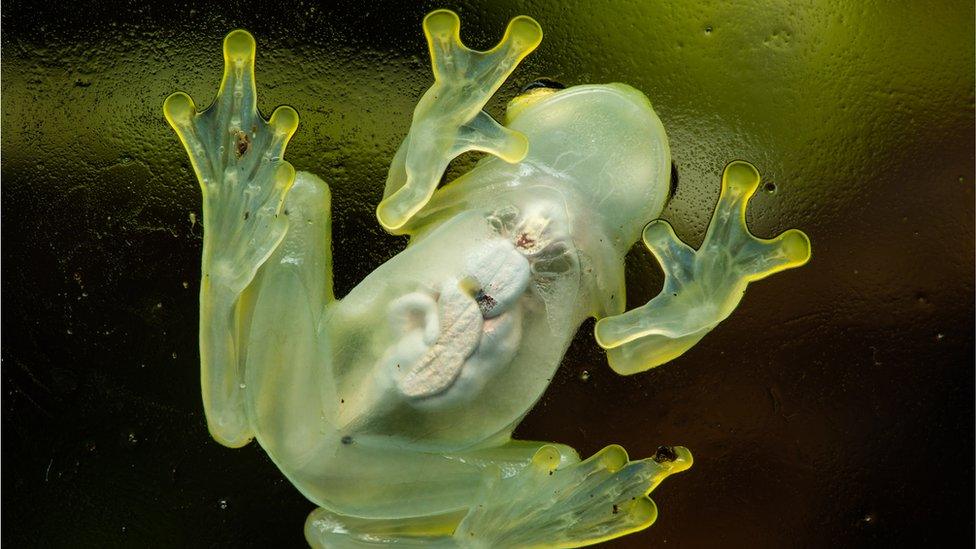Glass frogs: Scientists discover how species turns transparent
- Published
- comments

Glass frogs turn themselves transparent when they sleep
Scientists have discovered how glass frogs are able to become see-through!
The amphibians turn themselves transparent when they are asleep, in order to camouflage themselves on the the leaves they rest on.
Now, researchers have found that the frogs are able to do this by 'hiding' almost all of their blood.
The findings could help experts better understand blood flow in humans, which could lead to new treatments for people with blood clotting conditions.
What are glass frogs?
Glass frogs are small animals - around the size of a marshmallow
Glass frogs are mainly found in the rainforests of South and Central America.
The species gets its name from its almost transparent skin, which means its heart and other inner organs can be seen.
Glass frogs live mainly in trees and spend most of their time near water.
The amphibians are a nocturnal species - they are active at night and spend their days sleeping on bright green leaves in the Tropics.
They turn see-through so they can stay hidden and look almost invisible to birds and other predators who might be passing during the day whilst they rest.
What did scientists find?
Glass frogs sleeping on leaves become transparent and hidden from predators
Scientists have long known about the glass frog but did not understand how it made itself see-through.
However, research carried out by experts at Duke University in the United States have now discovered how they make this possible.
By shining different wavelengths of light through the animals while they were active and and while they were sleeping, they found that the frogs move most of their blood into their liver.
This causes the liver to double in size, while turning the rest of the frog's body transparent.
Not only that, they animals are able to easily move their blood without causing any problems, such as blood clotting.
Blood clotting is the process in which blood changes from a liquid to form a thick gel and can sometimes cause issues for humans.
Experts say that this information could be used to help better understand how human blood clots which could one day lead to new medical treatments.
